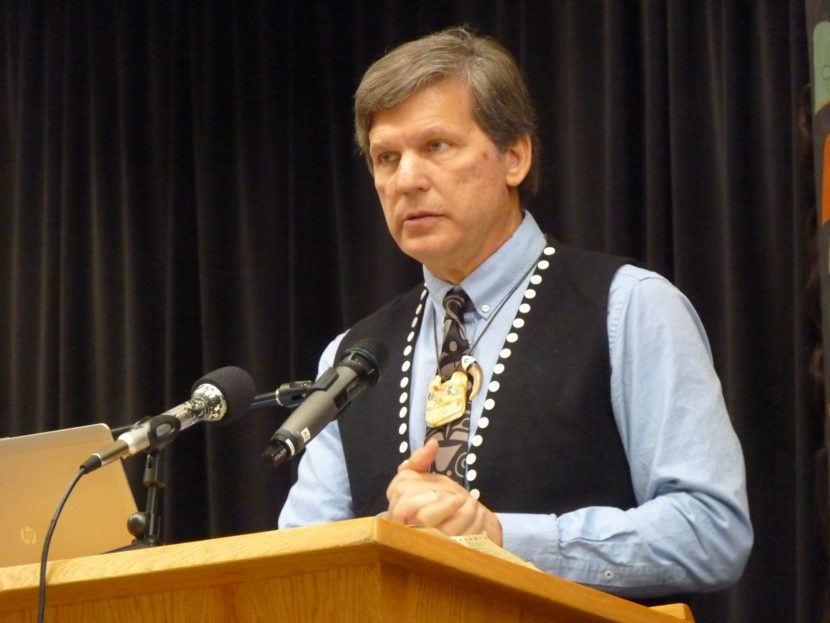
Southeast Alaska tribes have few communities connected by roads. And while the internet has helped bridge gaps from physical distances, it’s often far from fast or reliable.
That was on display this month when Central Council of Tlingit & Haida Indian Tribes of Alaska held its 85th tribal assembly entirely online. Tribal Vice President Will Micklin says the COVID-19 pandemic made that necessary, but the digital divide was apparent.
“It was a difficult connection for most of the villages outside of Sitka, Ketchikan and Juneau,” he said.
Tlingit & Haida is among hundreds of tribal entities nationwide to apply for a special wireless spectrum license to fill gaps in communities underserved by commercial carriers.
“We don’t have a profit motive,” Micklin said. “Our motive is delivery of service. I really view broadband as an inherent right for our tribal citizens, and that is made ever clearer to me by the impacts of the COVID-19 pandemic, where deficiencies and infrastructures became ever more apparent.”
This year the FCC made that possible by offering a spectrum for wireless broadband — including 3G and 4G and perhaps even 5G data when it’s available— to Native communities. Any unclaimed bandwidth will be auctioned off later to private carriers.
Other tribes in Southeast are taking the same initiative. Hoonah Indian Association has a pending application with the FCC. Tribal administrator Bob Starbard says it covers the tribe’s traditional territory and even some neighbors.
“Our plan is to use it to create a broadband network for all of the community residents of Hoonah and any of the other population centers that’s happened to fall within our territory,” Starbard said.
That territory includes Gustavus, at present time, and because radio waves don’t generally respect municipal boundaries, the service would likely reach Elfin Cove and Tenakee, too.
That overlaps with Tlingit & Haida’s application. But both tribes say they’d cooperate, not compete. The regional tribe has pledged not to overlap its services with local tribes.
If a tie-in with a commercial carrier doesn’t make sense for Hoonah, there’s talk of tribes joining forces because they’ll be on the same 2.5 GHz spectrum. Starbard says the Tlingit & Haida Central Council is discussing “some form of inter-tribal network” with other tribes.
But first, he says, the FCC will need to issue the licenses. And when it does, hundreds of tribes across the United States are expected to have a unique opportunity to fill gaps in connectivity in underserved areas — which describes most of rural Alaska.
Editor’s Note: This article has been updated to clarify that the 2.5 GHz spectrum data will likely be 3G and 4G data services as 5G is not yet available outside of a few limited test markets.
